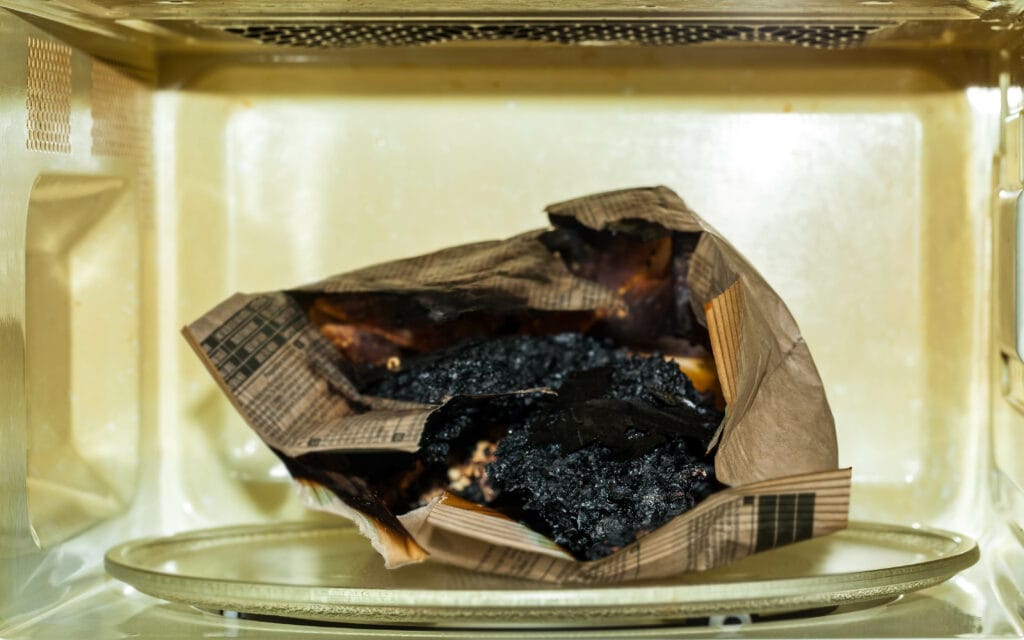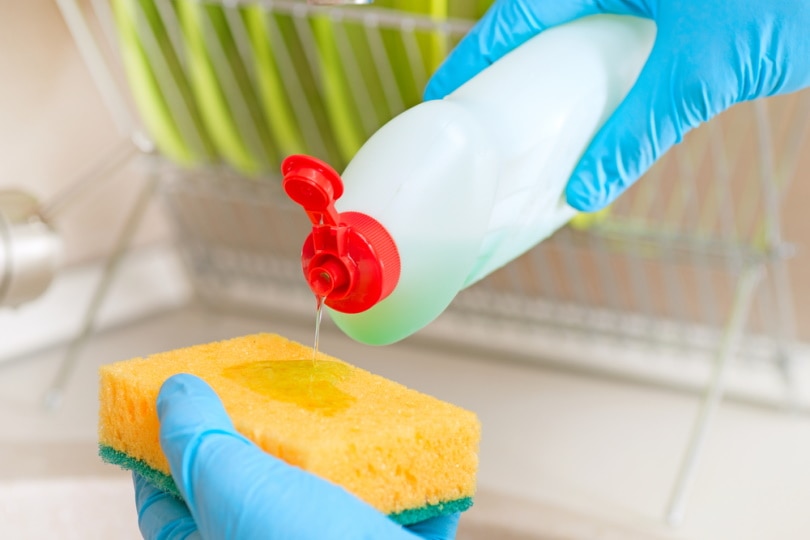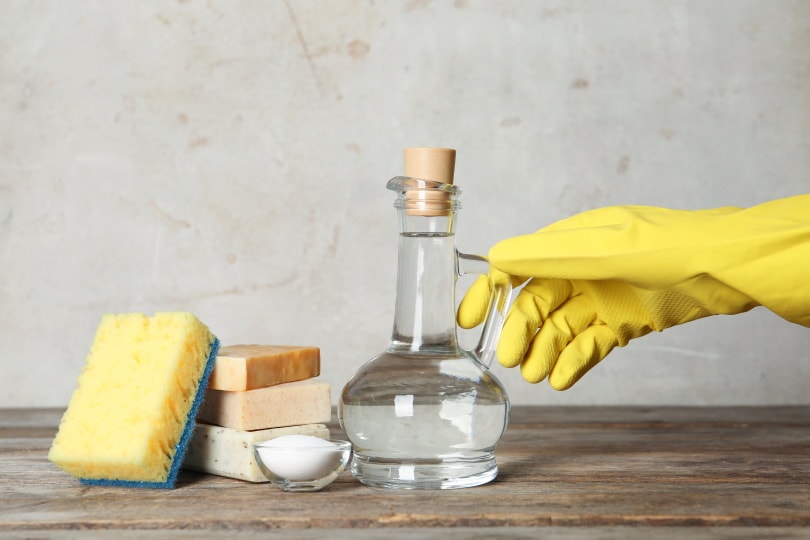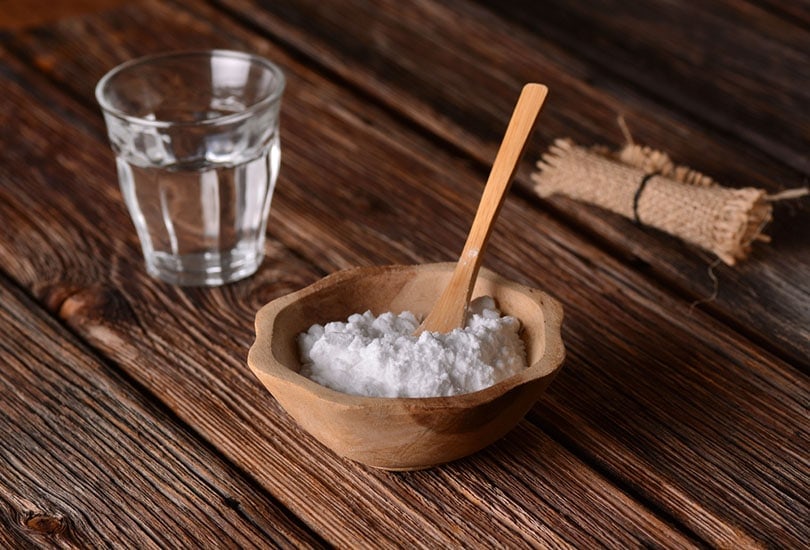How to Get a Burnt Smell Out of a Microwave (5 Easy Methods)
-
Ed Malaker
- Last updated:

We’ve all left food in the microwave too long, causing it to burn and produce a bad smell. That smell may linger long after you finish cooking, making many people think that it’s permanent. Fortunately, it’s possible to eliminate this odor, so keep reading as we list several methods that you can use to get your microwave smelling like new again.
The 5 Ways to Get a Burnt Smell Out of a Microwave
1. Dishwashing Liquid

Time Required: 1–2 hours
Tools and Materials
- Microwave-safe cup or bowl
- Dishwashing liquid
- Water
- Clean cloth
- Hard bristle brush
Instructions
- Fill a microwave-safe bowl or cup with 1/4 cup of water.
- Add a few drops of your favorite dishwashing liquid, and gently stir.
- Microwave the solution on high heat for approximately 1 minute or until you notice it starting to boil.
- Once you stop the microwave, allow the solution to sit undisturbed for at least 1 minute before you open the door.
- Carefully remove the bowl or cup with a cloth, gloves, or oven mitt.
- Use a bristle brush or scrub pad to help break up any caked-on food.
- Use a clean cloth to wipe out the condensation and debris from the microwave.
- Prop the microwave door open for an hour or two to allow it to dry out completely.
- Repeat these steps if the odor persists.
2. Vinegar

Time Required: 1–2 hours
Tools and Materials
- Vinegar
- Water
- Microwave-safe cup or bowl
- Clean cloth
- Bristle brush or scrub pad
- Spoon
Instructions
Like the previous method, you will add 1/4 to 1/2 cups of water to a microwave-safe dish or bowl. You can use more water because there are no suds to spill over. However, more hot water will be harder to remove from the microwave safely.
- Add 3 to 5 tablespoons of white vinegar to the water, and stir gently.
- Place the water in the microwave, and heat it until it starts to boil.
- Stop the microwave, and allow the water to sit undisturbed for 1–3 minutes with the door closed.
- Carefully remove the water, and use a scrub brush to break up any baked-on debris.
- Use a clean cloth to wipe down the walls of the microwave, removing the condensation and producing a nice, clean surface.
- Leave the microwave door open so the inside can air dry for an hour or two.
- Repeat if necessary.
3. Citrus

Time Required: 1–2 hours
Tools and Materials
- Microwave-safe bowl
- Citrus fruit
- Knife
- Water
- Scrub brush or pad
- Clean cloth
Instructions
- Begin by slicing your citrus fruit into small pieces and placing it in your microwave-safe bowl. Oranges and lemons work great, but you can use any citrus fruit.
- Fill the bowl with water, leaving some space at the top so it doesn’t boil over.
- Place the bowl in the microwave, and heat it for about 2 minutes until the water starts to boil.
- Leave the steaming bowl in the microwave with the door closed for several minutes.
- Remove the bowl from the microwave, and use a scrubbing brush to break up any grime.
- Use a clean cloth to wipe the microwave and remove dirt and condensation.
- Prop the door open for an hour or two to allow the insides to dry completely.
- Repeat as needed.
4. Baking Soda

Time Required: Overnight
Tools and Materials
- Baking soda
- Water
- Microwave-safe bowl
- Spoon
- Scrub brush or pad
- Clean cloth
Instructions
- Create a cleaning solution by mixing 5–6 teaspoons of baking soda with 1/2 cup of water in a microwave-safe bowl — the wider the bowl, the better.
- Place the bowl in the microwave, and heat it until it begins to boil.
- Allow the solution to sit undisturbed in the microwave for several minutes with the door closed.
- Carefully remove the bowl, and use the scrub brush or pad to remove any dense food.
- Use a clean cloth to clean the microwave and remove dirt and condensation.
- Wait until the solution is cool to the touch, then use a clean cloth dipped in the baking soda mixture to wipe down the microwave.
- Place the bowl in the microwave, close the door, and let it sit overnight.
- The next morning, remove the bowl, and use a clean wet cloth to wipe out the microwave.
- Leave the door open so it can dry completely.
- Repeat as needed.
5. Vanilla Extract

Time Required: 30 seconds
Tools and Materials
- Vanilla extract
- Microwave-safe shot glass
Instructions
- Fill a shot glass ½–¾ full with vanilla extract.
- Place the shot glass in the microwave, and heat it for 20–30 seconds
- Remove the microwave-safe bowl and enjoy your fresh fragrance.
Although many people recommend vanilla extract, you can use other fragrances, including sage, peppermint, almond, and olive. This method is more a mask than a solution, but it’s a great choice if the other options don’t work.
Other Tips and Tricks
- Save your remaining liquid dish soap, vinegar, or citrus solutions, and add them to a spray bottle to clean other surfaces in your home.
- Clean the microwave frequently to remove contaminants that might cause a bad odor.
- Use pre-programmed cooking times to save energy and reduce the risk of burning food.
- Keep a small box of baking soda in the microwave to help absorb orders when you’re not using it.

Conclusion
If you notice a bad odor coming from your microwave, we recommend starting with the dishwashing-liquid method because most people already have it in the house. Warming the water to produce condensation on the walls can help break up and loosen contaminants, making them easy to wipe away. Following this with the baking-soda method is usually enough to fix any odor problems, but if the microwave is especially dirty because of splattering or splashing, the vinegar and citrus methods will help you get things under control. If all else fails, extracts can help you make the microwave smell better.
See also:
- 6 Proven Ways to Remove Burnt Popcorn Smell From Your Home
- What Bowls Are Microwave-Safe? – 4 Different Types
Featured Image Credit: Denys Niezhientsev, Shutterstock
Contents